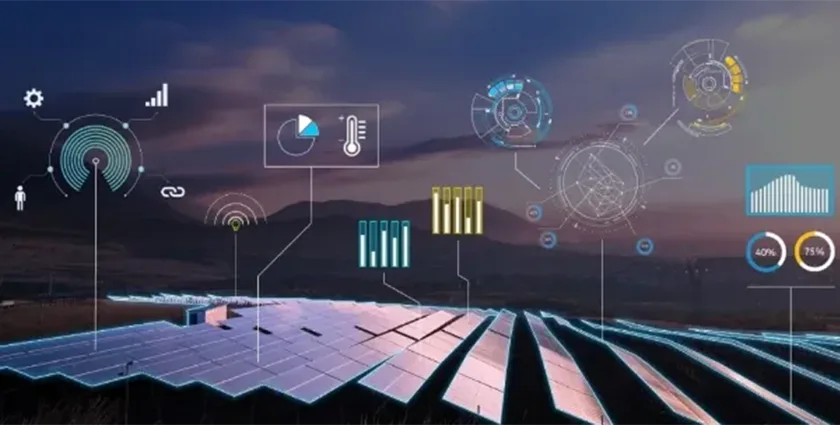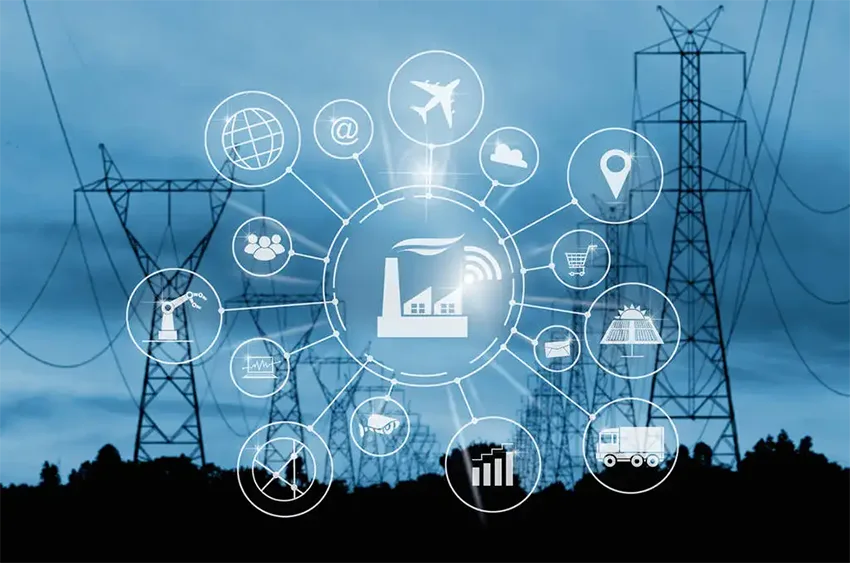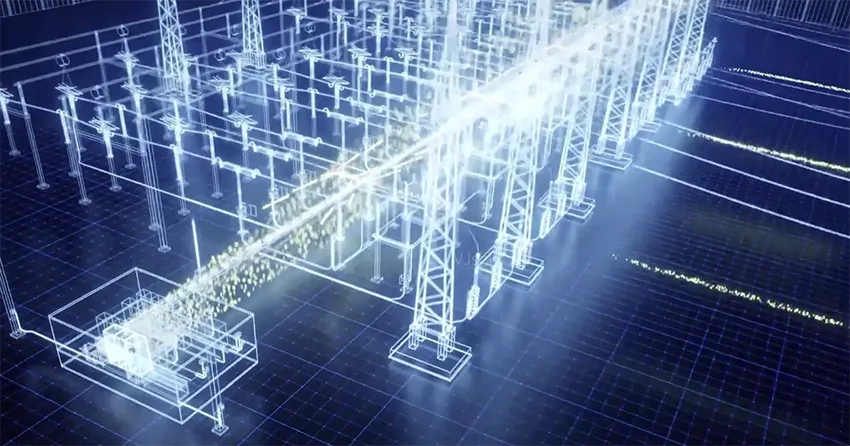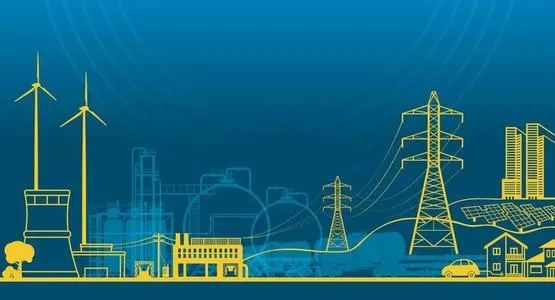簡單地說, 智慧能源是網路與能源生產深度融合的能源產業成長新常態, 傳染, 貯存, 消費與能源市場. 智慧能源主要特徵是智慧設備, 多能協同, 對稱資訊, 分散的供給和需求, 扁平化系統、公開交易.
本文帶您全面了解智慧能源應用!
1. 什麼是智慧能源

簡單地說, 智慧能源是網路與能源生產深度融合的能源產業成長新常態, 傳染, 貯存, 消費與能源市場. 智慧能源主要特點是裝備智能化, 多能協同, 對稱資訊, 分散的供給和需求, 扁平化系統、公開交易.
然而, 最近幾年, 發電集團已開始對建設新型數位化電廠進行研究與探索, 智慧電廠和智慧電廠.
2. 智慧能源如何實現 工作

智慧能源, 主要涵蓋兩個應用場景包括 智慧電網 和智慧礦山, 代表能源產業自動化、智慧化. 電力系統由五大組成, 涵蓋發電, 傳染, 分配, 變電站和消耗, 且不同的鏈路對網路有不同的需求.
現在, 電力通訊網路主要以光纖覆蓋. 隨著智慧電網的不斷發展, 然而, 光纖已無法滿足電力產業的發展要求. 智慧電網主要分為兩類細分應用場景: 控制型和獲取型. 5G不僅滿足控制類應用場景的低時延需求,也滿足採集類應用場景的大頻寬、大連線的需求, 這將顯著促進成長 智慧電網. 由於採礦環境複雜,人工現場作業風險高、效率低, 礦山自動化將是未來礦山發展的必然趨勢.
智慧礦山包含兩類應用案例, 包括遠端監控和無人操作. 4G網路效能無法滿足智慧礦山發展需求. 5G 可以滿足遠端監控應用對大頻寬的需求以及無人操作的低延遲需求, 推動智慧礦山發展.
3. 智慧能源應用了哪些技術

(1) 區塊鏈技術
在網路時代, 區塊鏈技術是分散式資料儲存等電腦技術的創新應用, 點對點傳輸, 共識機制和加密演算法. 具有去中心化的技術特點, 資訊共享, 記錄不可逆性, 參與者匿名和資訊可追溯, 區塊鏈技術為資料安全等問題提供了全新的技術解決方案, 智慧能源發展過程中的多主體協同與資訊融合. 該技術可為緩解風廢光現象提供新的可能, 中國能源市場綜合能源服務的成長與智慧交易系統的建立.
(2) 大數據技術
能源大數據規模大, 各種類型, 速度快,價值密度有限. 大數據技術是以海量資料採集為研究對象的綜合技術, 這是感測技術的綜合, 資訊和通訊技術, 電腦技術, 數據分析技術與專業領域技術. 它是傳統資料探勘和資料分析技術的繼承和成長. 大數據技術可實現從能源生產到消費的全鏈條感知與分析, 為能源系統安全穩定運作提供重要支撐, 消費性側能源效率提升, 和源-電網-負載-儲存協同作用.
(3) 雲端平台技術
雲端平台是各類資料連結、多種運算資源整合所創建的邏輯統一的資料中心, 依賴儲存, 交換和虛擬化組件. 雲端平台的特色是虛擬化, 高可靠性, 高通用性, 高擴展性, 高速, 和靈活性. 與傳統伺服器不同, 雲端平台將實體資源虛擬成虛擬機器資源池, 可透過靈活呼叫軟硬體資源為使用者提供多種服務.
4. 為什麼要使用智慧能源
智慧能源管理平台有哪些優勢?
透過網路與智慧城市互聯, 可以為再生能源建立基於數據的平台, 建築能源, 電動車, 與家庭用電中網路大數據的運用.
路燈管理
可無線管理智慧路燈,控制各種燈頭,設定管理區域權限,即時監控路燈. 具有可靠、操作方便等優點, 它還為路燈提供靈活的設定來設定開關時間, 路燈的管理與監控.
能源消耗公共網站
網站不僅監控資訊發布和能源消耗數據,還將網站自繳費清單與網站隔離, 提高內部和外部網路的安全性.
光電微型電站管理系統
軟體系統可即時監控逆變器和光電模組. 如果發生故障, 會在各方面進行提醒或保留.
空間能源消耗資訊管理系統
系統可連接企業各種能源消耗資訊和即時位置, 公園和學校, 反映在地圖上,提供更直覺、便利的能源消耗管理.
5. 智慧能源應用案例 系統

智慧生產
能源產業是資產密集產業,具有設備價值高的特性, 產業鍊長, 高風險、環保要求嚴格. 產業面臨設備管理不透明等痛點, 工藝知識傳承艱難, 產業鏈上下游協同程度低, 安全生產壓力大. 隨著世界能源格局的變化, 能源發展向低碳轉型, 去中心化和智能化. 能源消費服務市場需求變化倒立生產, 倉儲運輸環節更安全, 更有效率、更清潔. 因此, 需要透過數位技術提高能源生產過程的智慧化.
電廠鍋爐智慧預警
基於發電廠的機械模型和 人工智慧技術, 鍋爐智慧預警,透過監測運作狀態判斷爐管是否發生洩漏,實現鍋爐管洩漏的早期發現和報告,並判斷洩漏區域的位置和洩漏程度,為預測性維護提供資料支援設備數量. 將設備運作異常消除在萌芽階段, 減少非計畫停爐,降低開爐能耗,大幅提升設備的使用效率.
智慧安全管理
能源企業介紹 人員定位系統 透過三維空間建模實現現場位置劃分和人員定位. 將各地點對應的安全注意事項與生產作業資訊關聯起來,幫助現場人員智慧辨識危險區域,避免人員傷害或事故發生. 現在, 人員定位誤差可控制在 20 至 50 毫米, 可有效防止人員錯區間運行,避免誤操作.
「無人值守、少無人值守」模式的新能源電廠
基於互聯網架構, 該系統整合了人工智慧, 大數據, 雲端運算, 物聯網, mobile Internet and other technologies to establish a new energy big data innovation platform with the integration of data collection, 貯存, service and operation, so as to achieve real-time collection of multi-source heterogeneous data from source, network and load side and the smallest granularity data collection at wind turbine component level and PV panel level with a collection time from 5 to 7s, which efficiently supports various industry applications. Construction and use. It realizes “unattended and few unattended” mode in lots of new energy power stations, streamlining staff redundancy and enhancing efficiency in power stations.
智慧探索
Because of the limited visualization of downhole intelligence and reservoir information, 油氣田開發中後期深化勘探潛力更具挑戰性. 同時, 隨著風險勘探逐漸轉向人類調查難以覆蓋的深海區域, 勘探對新層位油氣儲量預測精度要求較高. 透過石油儲量智慧分析、井下情報分析等技術,取得高精度石油儲量估算數據. 以數據為支撐決策,系統最佳化勘探規模與建置時機. 海洋和陸地都面臨深挖老油區的壓力. 透過無人機等智慧勘探手段取得高解析度儲層模型,實現油氣勘探全方位數位化視覺化與協同管理, 提高油藏整體預測精度,探索新層位、新領域.
智慧電力巡檢
電力巡檢的核心內容是輸變電設備的運作與維護. 電力公司利用AI演算法提高智慧巡檢機器人設備影像辨識準確率, 可大幅降低維運成本,進一步解放勞動力. 預先設定巡檢點並規劃巡檢路線後, 智慧巡檢機器人可自動進行所有相關儀表的檢測與抄讀, which is effective to reduce the burdens of manual inspection, improve work efficiency and decrease oversights and even errors caused by human factors, maximizing the elimination of safety hazards.
智慧型瓦斯管網
To prevent the safety hazards caused by gas leaks, the smart gas pipeline system systematically manages gas transmission, including uninterrupted data monitoring and surveillance, automatic warning of leak points, locating of accident sites, intelligent emergency treatment, transmission of warning information and activation of repair procedures. The gas company will set up a certain number of automatic gas leak monitoring and alarm facilities and then distribute them at the points where monitoring is required. 因此, in the event of an emergency, early warning information can be conveyed instantly.
石油管道焊接智慧缺陷影像檢測
In the pipeline-welding process, defects such as porosity and cracks will appear in the welding seam because of the impact of people, welding machines, welding material, different methods and environments, thus affecting the service life of the pipeline. 現在, defects are usually detected and graded manually through the evaluation of X-ray inspection photos, which is inefficient and easily impacted by the ability and experience of technicians, which is thus prone to inconsistent or even misclassified evaluation results. Based on AI deep-learning technology, smart flaw identification and defect grading for defects such as round, striped, unfused and cracked drawbacks can improve the accuracy level and efficiency of defect detection, thus effectively overcoming manual misjudgment and promoting more objective and standardized defect detection.
6. 智慧能源設備有哪些

聰明的 電能表 & 能量發射器
本質是 智慧能源監控 備援系統需要將電工儀表等各類採樣設備改造為多參數智慧資訊取樣終端. 具有集中資訊採樣等功能, 統一調用, 和分散式處理, 智慧終端可傳輸, 按需儲存、按需顯示,具有即插即用功能.
感應器
感測器是能夠感知可測量的信息,並按照一定規律將其轉換成電信號或其他所需形式的信息輸出,以滿足信息傳輸要求的探測設備。, 加工, 貯存, 展示, 記錄和控制. 該感測器可以檢測智慧能源系統中的功率和非功率功能.
電子元件
電子元件是小型機器. 儀器的組件通常由可用於同類產品的多個部件組成; 常指電器等行業的一些零件, 收音機, 和儀器. 也, 電子元件是指電容器等電子設備的總稱, 電晶體, 遊絲和發條, 這對於智慧能源系統至關重要.
智慧能源設備管理系統能源效率專業分析模組,提供熟料生產線統計分析等多種分析模型, 熟料生產線成本分析, 工廠成本分析, 原料磨系統分析, 磨煤機系統, 迴轉窯系統耗電量, power consumption of mill system and waste heat power generation system. Users can also customize the analysis models according to their requirements.
7. 智慧能源市場有哪些
What are the trends and markets of the smart energy industry?
The guarantee of smart energy is the system. Smart energy will bring about a new energy pattern. 因此, it needs an advanced system that can encourage scientific and technological innovation, optimize industrial organization, advocate energy conservation, and promote international cooperation to ensure the stable operation and rapid growth of the smart energy system.
Interconnected technology brings changes to the operation of the whole world and affects the work and life of billions of people. 所以, 學術界開始提出「建造智慧地球」並提出智慧機場的設想, 智慧銀行, 智慧鐵路, 智慧城市, 智慧型電源, 智慧電網和智慧能源. 智慧能源和其他想法. 協同聯合供電是網路+智慧能源的兩大優勢, 熱, 冷卻, 瓦斯和水, 那是, 「多能互補」以及這些能源在生產上的協同運行, 轉換, 傳輸和消耗, 指的是“源和負載交互”. 也可以稱為綜合能源解決方案, 可以實現穩定的能源需求, 提高效率並降低能源成本, 最終實現生產者多贏的格局, 消費者與社會.
















